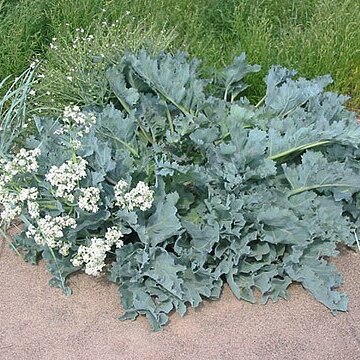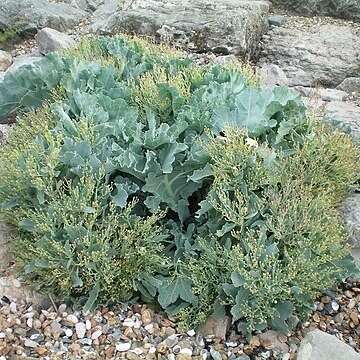Herbs annual or perennial, rarely subshrubs. Trichomes absent or simple. Stems erect, often simple basally, much branched apically. Basal leaves long petiolate, rosulate or not, simple, dentate, lyrate, or pinnately lobed, often very large. Cauline leaves petiolate, similar to basal leaves. Racemes many flowered, usually lax, ebracteate, often in panicles, elongated considerably in fruit. Fruiting pedicels slender, erect or divaricate. Sepals ovate or oblong, ascending or spreading, not saccate. Petals white or rarely yellow, spreading or ascending, longer than sepals; blade obovate or oblong, apex obtuse; claw much shorter than sepals. Stamens 6, strongly tetradynamous; filaments not dilated at base; lateral pair filiform, wingless, unappendaged; median pairs winged and/or toothed, rarely filiform and toothless; anthers ovate or oblong, obtuse at apex. Nectar glands 4; median pair large, globose or oblong; lateral pair minute, intrastaminal, semiannular. Ovules 2 per ovary. Fruit indehiscent, nutletlike silicles, segmented; basal segment seedless, much shorter than terminal segment; distal segment 1-seeded, globose or ovoid, corky, terete or 4-angled, smooth, rugose, or reticulate; gynophore absent; replum and septum obsolete; style absent, obsolete, or rarely to 1 mm; stigma capitate, entire. Seeds wingless, oblong, pendulous on a basal funicle, plump; seed coat smooth, not mucilaginous when wetted; cotyledons conduplicate.
Annual or (not in E. Africa) perennial herbs, with taproots that in the perennial species are mostly thickened, glabrous to densely hispid with unbranched hairs. Stems ascending to erect, branching from the base or only from upper parts. Leaves membranous or (in perennial species) fleshy, rhombic, elliptic or obovate in outline, simple or variously divided (lyrate-to repeatedly pinnatifid). Racemes terminal and axillary, ebracteate, corymbose, with numerous small flowers, in fruit elongate and rather lax. Sepals not saccate, oblong, greenish. Petals usually white, small but usually longer than the sepals (rarely reduced). Stamens 6, distinctly tetradynamous; filaments of the median stamens mostly with a denticulate appendix. Distinct nectaries between the median filament-bases of each pair; less conspicuous strands of nectarial tissue inside the lateral ones. Ovary often on a short but distinct gynophore and consisting of 2 segments, the lower one of about the length and width of the gynophore, the upper one larger, ovoid to narrowly ellipsoid; each segment usually with 1 ovule, only the upper segment developing a seed and forming an indehiscent globose to ellipsoid nutlet. Style very short or sessile. Seed faintly sculptured or smooth, yellowish brown, spheroid.


